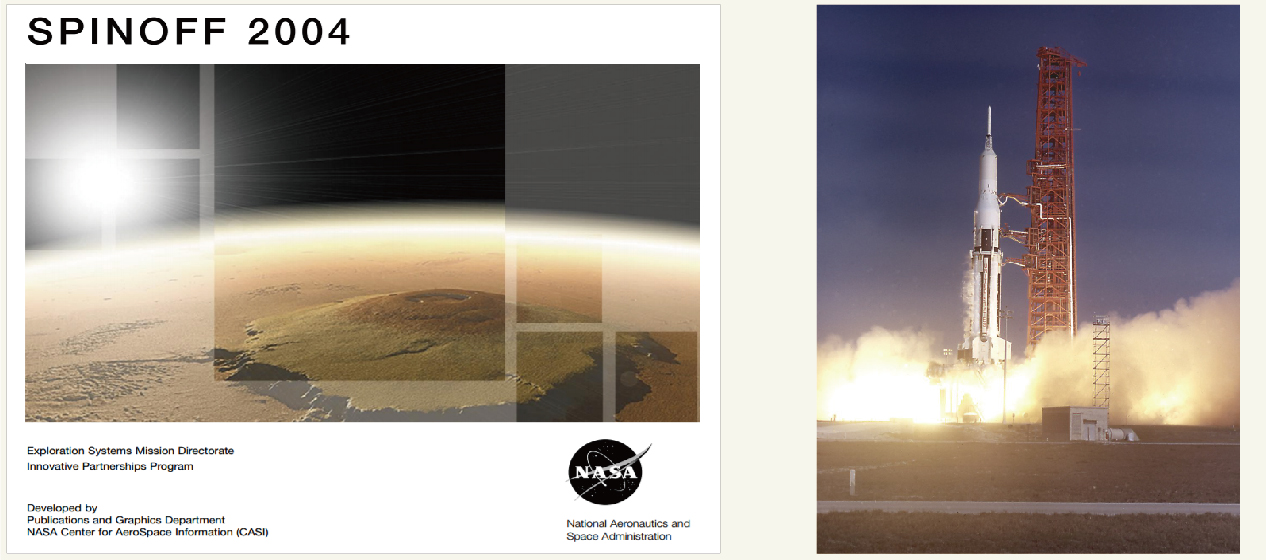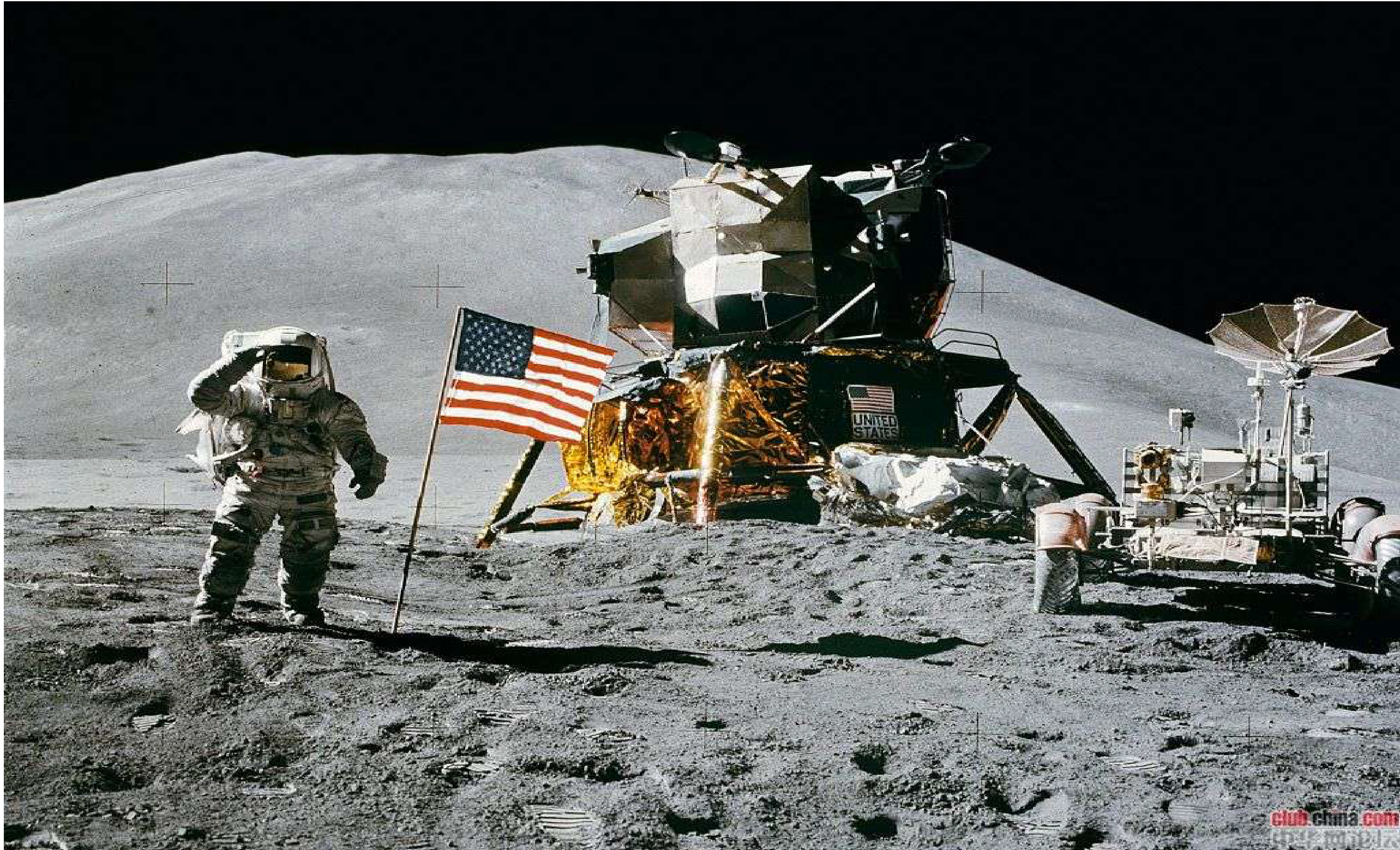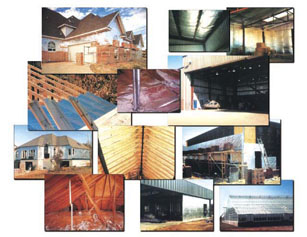
技術文章
〔反射式〕輻射熱屏障技術源自 : 1976年NASA美國航太總署-阿波羅7號首次戴人任務
-- 2017. 05. 15
〔反射式〕輻射熱屏障技術源自 : 1976年NASA美國航太總署-阿波羅7號首次戴人任務。
高效能的純鋁化聚合物氣泡膜斷熱技術,能讓太空人只穿著短袖就能舒適地在阿波羅號太空船內自由工作生活,這種技術也被應用在人造衛星與無人太空船的各種精密設備,確保不受外太空極溫而影響其內部運作。
〔反射式〕輻射熱屏障技術,目前在歐美日先進國家正被應用在建築物的斷熱領域,利用其「反射.屏障熱技術」有效地節約能源,應用在居家、辦公大樓、工業與農業等各種建築物減少能源耗損,創造舒適的環境。這種反射式斷熱材料可於建築規劃或工程系統初期就先結合進入,也可應用在既有建築物隔熱節能改善上,優異的隔熱、保溫、防潮、耐候性能不需再維護。

Heating and Cooling Efficiency for Homes Originating from NASA Technology Apollo VII Mission:
The First Manned Apollo Mission


HEATING AND COOLING EFFICIENCY FOR HOMES
CONSUMER/HOME/RECREATION
ORIGINATING TECHNOLOGY/ NASA CONTRIBUTION
Over 40 years ago, NASA developed Radiant Barrier technology to protect astronauts in the Apollo Program from temperatures that ranged from 250 °F above to 400 °F below zero Fahrenheit. This feat in temperature control technology enabled the astronauts to work inside the Apollo Command Module wearing short-sleeve shirts, with temperatures similar to those of a regular business office. The Radiant Barrier has been applied to virtually all spacecraft since then, including unmanned spacecraft with delicate instruments that need protection from temperature extremes. It is also applied to the astronauts’ space suits, protecting them during space walks.


Since the 1970s, private industry has had the opportunity to apply Radiant Barrier technology to various commercial applications. This NASA-developed, public domain technology has been applied to energy conservation techniques for homes and offices, and even specialty applications such as candy wrapping, thermos bottles, windshield covers for automobiles, fire suits, space blankets for forest rangers, race cars, and refrigeration trucks to name just a few.
PRODUCT OUTCOME Heating and Cooling Efficiency for Homes Originating from NASA Technology
Eagle Shield is a Radiant Barrier product that can be installed directly on top of existing ceiling insulation in a home to reduce heating and cooling bills. Manufactured by Eagle Shield, Inc. , of San Ramon, California, the product consists of two sheets of 99.5 percent industrial grade aluminum adhered together and tri-laminated to a thermal break to create a two-sided reflector. It is perforated with tiny holes that allow moisture to pass through so it does not create a moisture barrier for existing insulation. According to the company, installation takes an average of 2 to 6 hours based on difficulty and accessibility of the attic, walls, and crawl space interiors. Eagle Shield Radiant Barrier Insulation is not mechanical, therefore it cannot break down and it requires no electrical or plumbing connections in the installation process.
Eagle Shield cuts heating and cooling costs by lowering the amount of heat transferred into a home in the summer and out of a home in the winter. In the summer, heat waves generated by the home’s roof decking are reflected by the Radiant Barrier before they have the opportunity to be absorbed by the ceiling insulation, thereby keeping the home cooler. In the winter, the radiated heat waves from within the home are absorbed by the ceiling and conducted up through the insulation into the attic. In this case, the down-facing side of the Radiant Barrier reflects the radiant heat waves emitted from the insulation back down toward the living area instead of allowing them to simply escape into the attic. This process eliminates heat loss through the ceiling, saving heating costs. In addition to lowering bills and increasing the comfort level of the home, the improved temperature control achieved by the Radiant Barrier product can potentially extend the life of the home’s heater and air-conditioning unit. Eagle Shield can also be applied to water heaters and ducts for improved energy efficiency. These applications show the continued benefits of Eagle Shield’s mission of “Bringing Space Age Technology Down to Earth.”


NASA〔美國太空總署〕開發了反射輻射熱屏障技術,以保護阿波羅計畫中的太空人,免受從華氏250°F到華氏零下400°F的高低溫度差。這溫度控制技術使太空人能夠在穿著短袖襯衫在阿波羅登月艇內自在地工作,其溫度與普通辦公室的溫度相似。從那時候開始,這種反射輻射熱屏障技術就被應用在所有的太空船上,包括那些需要隔絕極溫的載送精密儀器的無人太空船。這種輻射隔熱屏障技術也被應用在太空人的太空裝中,讓他們在太空漫步時得到保護。
這種反射式隔熱技術使用純鋁化聚合物氣泡膜來隔熱.保溫,讓熱量保持一個恆定的溫度,做到了一般隔熱材料沒法達到的效果。表面的純鋁化處理技術能反射95%以上來自太空的輻射熱量,阻擋其進入太空船內部,在太空人穿著的太空裝中,這超薄且柔軟的的材料能反射太空人的體溫回其身體達到保溫效果,也能反射來自太陽的輻射使其不至於被灼傷,以保持它們身體涼爽。 *如果用一般傳統的體積式隔熱材料,太空裝需要7英尺〈超過2公尺〉的厚度!
1970年代開始,民營工業開始有機會將〈反射式〉輻射熱屏障技術用於各種商業應用上,這NASA開發的航太領域技術已經在一般的建築住宅與大樓外殼的隔熱與節能應用,甚至應用在一些特殊用途,包括食品包裝紙,熱水瓶,防火服裝,護林員的隔熱毛毯,冷凍貨櫃車,飛機停機棚….等等。
這一種反射式隔熱產品,可直接安裝在家中現有天花板的頂部,以減少暖氣和製冷空調費用。該產品由兩片99.5%的航太工業級純鋁箔高溫熱壓在一起,以產生雙面反射器。夾層以有阻燃功能的聚合物氣泡膜堆疊結構,阻隔輻射熱量所產生的熱傳導。

資料來源 : 美國太空總署NASA 2004年太空輕金屬雜誌! https://spinoff.nasa.gov/
高效能的純鋁化聚合物氣泡膜斷熱技術,能讓太空人只穿著短袖就能舒適地在阿波羅號太空船內自由工作生活,這種技術也被應用在人造衛星與無人太空船的各種精密設備,確保不受外太空極溫而影響其內部運作。
〔反射式〕輻射熱屏障技術,目前在歐美日先進國家正被應用在建築物的斷熱領域,利用其「反射.屏障熱技術」有效地節約能源,應用在居家、辦公大樓、工業與農業等各種建築物減少能源耗損,創造舒適的環境。這種反射式斷熱材料可於建築規劃或工程系統初期就先結合進入,也可應用在既有建築物隔熱節能改善上,優異的隔熱、保溫、防潮、耐候性能不需再維護。

Heating and Cooling Efficiency for Homes Originating from NASA Technology Apollo VII Mission:
The First Manned Apollo Mission


HEATING AND COOLING EFFICIENCY FOR HOMES
CONSUMER/HOME/RECREATION
Over 40 years ago, NASA developed Radiant Barrier technology to protect astronauts in the Apollo Program from temperatures that ranged from 250 °F above to 400 °F below zero Fahrenheit. This feat in temperature control technology enabled the astronauts to work inside the Apollo Command Module wearing short-sleeve shirts, with temperatures similar to those of a regular business office. The Radiant Barrier has been applied to virtually all spacecraft since then, including unmanned spacecraft with delicate instruments that need protection from temperature extremes. It is also applied to the astronauts’ space suits, protecting them during space walks.

Made of aluminized polymer film, the Radiant Barrier both bars and lets in heat to maintain a consistent temperature in an environment where ordinary insulation methods will not suffice. The aluminization of the material provides a reflective surface that keeps more than 95 percent of the radiated energy in space from reaching the spacecraft’s interior. In space suits, the thin and flexible material reflects the astronauts’ body heat back to them for warmth, while at the same time reflecting the sun’s radiation away from them to keep them cool. Using conventional insulation, a space suit would have required a 7-foot-thick protective layer. Apollo VII Mission: The First Manned Apollo Mission

PARTNERSHIP
Since the 1970s, private industry has had the opportunity to apply Radiant Barrier technology to various commercial applications. This NASA-developed, public domain technology has been applied to energy conservation techniques for homes and offices, and even specialty applications such as candy wrapping, thermos bottles, windshield covers for automobiles, fire suits, space blankets for forest rangers, race cars, and refrigeration trucks to name just a few.
PRODUCT OUTCOME Heating and Cooling Efficiency for Homes Originating from NASA Technology
Eagle Shield is a Radiant Barrier product that can be installed directly on top of existing ceiling insulation in a home to reduce heating and cooling bills. Manufactured by Eagle Shield, Inc. , of San Ramon, California, the product consists of two sheets of 99.5 percent industrial grade aluminum adhered together and tri-laminated to a thermal break to create a two-sided reflector. It is perforated with tiny holes that allow moisture to pass through so it does not create a moisture barrier for existing insulation. According to the company, installation takes an average of 2 to 6 hours based on difficulty and accessibility of the attic, walls, and crawl space interiors. Eagle Shield Radiant Barrier Insulation is not mechanical, therefore it cannot break down and it requires no electrical or plumbing connections in the installation process.
Eagle Shield cuts heating and cooling costs by lowering the amount of heat transferred into a home in the summer and out of a home in the winter. In the summer, heat waves generated by the home’s roof decking are reflected by the Radiant Barrier before they have the opportunity to be absorbed by the ceiling insulation, thereby keeping the home cooler. In the winter, the radiated heat waves from within the home are absorbed by the ceiling and conducted up through the insulation into the attic. In this case, the down-facing side of the Radiant Barrier reflects the radiant heat waves emitted from the insulation back down toward the living area instead of allowing them to simply escape into the attic. This process eliminates heat loss through the ceiling, saving heating costs. In addition to lowering bills and increasing the comfort level of the home, the improved temperature control achieved by the Radiant Barrier product can potentially extend the life of the home’s heater and air-conditioning unit. Eagle Shield can also be applied to water heaters and ducts for improved energy efficiency. These applications show the continued benefits of Eagle Shield’s mission of “Bringing Space Age Technology Down to Earth.”


NASA〔美國太空總署〕開發了反射輻射熱屏障技術,以保護阿波羅計畫中的太空人,免受從華氏250°F到華氏零下400°F的高低溫度差。這溫度控制技術使太空人能夠在穿著短袖襯衫在阿波羅登月艇內自在地工作,其溫度與普通辦公室的溫度相似。從那時候開始,這種反射輻射熱屏障技術就被應用在所有的太空船上,包括那些需要隔絕極溫的載送精密儀器的無人太空船。這種輻射隔熱屏障技術也被應用在太空人的太空裝中,讓他們在太空漫步時得到保護。
這種反射式隔熱技術使用純鋁化聚合物氣泡膜來隔熱.保溫,讓熱量保持一個恆定的溫度,做到了一般隔熱材料沒法達到的效果。表面的純鋁化處理技術能反射95%以上來自太空的輻射熱量,阻擋其進入太空船內部,在太空人穿著的太空裝中,這超薄且柔軟的的材料能反射太空人的體溫回其身體達到保溫效果,也能反射來自太陽的輻射使其不至於被灼傷,以保持它們身體涼爽。 *如果用一般傳統的體積式隔熱材料,太空裝需要7英尺〈超過2公尺〉的厚度!
1970年代開始,民營工業開始有機會將〈反射式〉輻射熱屏障技術用於各種商業應用上,這NASA開發的航太領域技術已經在一般的建築住宅與大樓外殼的隔熱與節能應用,甚至應用在一些特殊用途,包括食品包裝紙,熱水瓶,防火服裝,護林員的隔熱毛毯,冷凍貨櫃車,飛機停機棚….等等。
這一種反射式隔熱產品,可直接安裝在家中現有天花板的頂部,以減少暖氣和製冷空調費用。該產品由兩片99.5%的航太工業級純鋁箔高溫熱壓在一起,以產生雙面反射器。夾層以有阻燃功能的聚合物氣泡膜堆疊結構,阻隔輻射熱量所產生的熱傳導。


